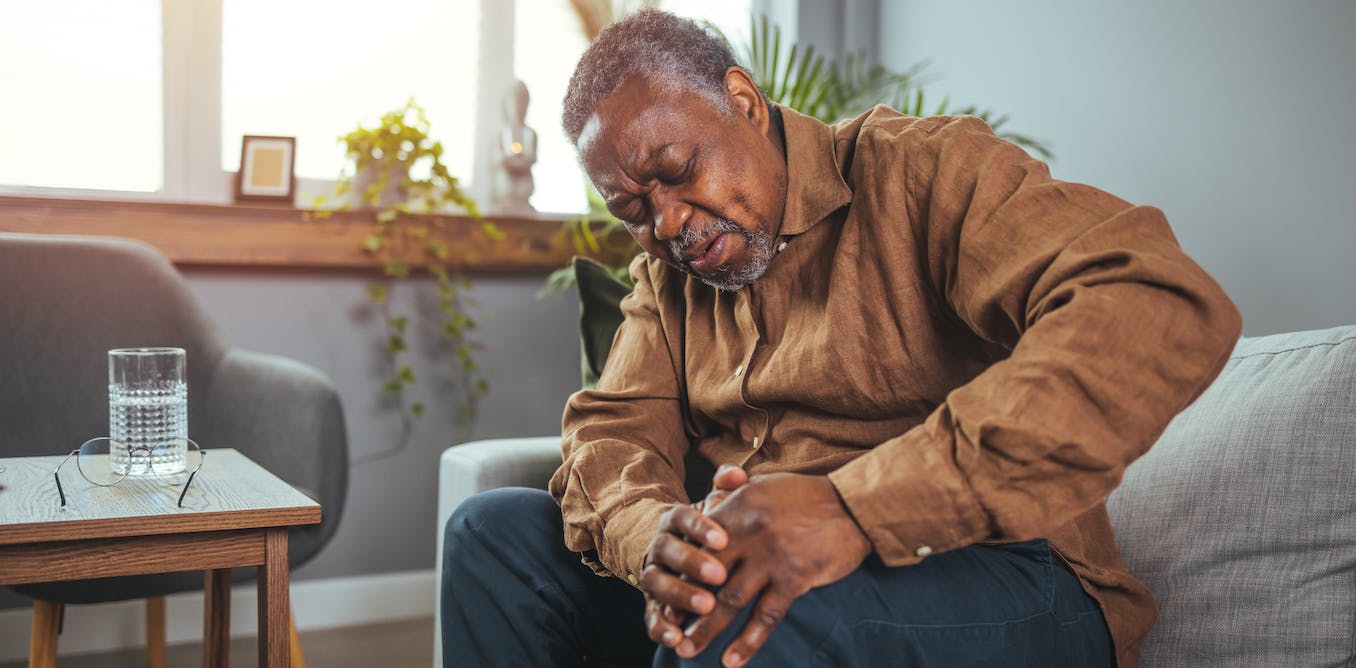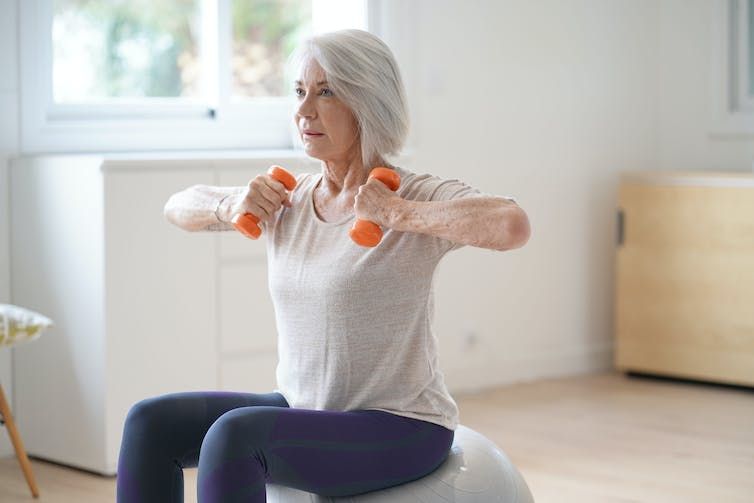Sore joints now it’s getting cold? It’s tempting to be less active – but doing more could help you feel better

Image: Shutterstock
In summary
Analysis for The Conversation by Adjunct Senior Lecturer Charlotte Ganderton and Psychology Lecturer Inge Gnatt
One in three Australians has a musculoskeletal condition involving joint pain, and the most common cause is arthritis. Around 3.6 million Australians have arthritis and this is projected to rise to 5.4 million by 2030.
For some people with joint pain, cold weather seems to make it worse. But temperature is just one factor impacting perceptions of greater pain during winter. Other factors include those we have some level of influence over, including sleep, behavioural patterns, mood and physical activity. Emerging research suggests greater pain levels in winter may also be related to a person’s perception of the weather, lack of vitamin D and fluctuations in their disease.
Physical activity is one of the best treatments to increase function, strength and mobility – and improve quality of life. It also promotes mental and physical health and reduces the risk of other chronic diseases.
But pain can be a barrier to exercise and activities you’d usually do. So what can you do about it?
Our brain tries to protect us
When it comes to pain, our brain is very protective: it’s like an inbuilt alarm system and can warn us about impending danger or harm that has occurred so we can respond.
But it’s not always a reliable indicator of actual damage or trauma to the skin, muscle or bone, even when it feels like it is. In some instances, this warning system can become unhelpful by setting off “false alarms”.
Joint pain and stiffness can also appear to worsen during colder weather, prompting fears we could make it worse if we undertake or overdo movement. This can result in people avoiding physical activity – even when it would be beneficial – which can worsen the pain.
We tend to exercise less when it’s cold
Seasons affect how much physical activity we get. Summer months bring warmer weather, longer daylight hours and people get outdoors more. Warmer weather also tends to elicit a positive outlook, a lift in mood and burst of physical activity to fulfil New Year’s resolutions.
Cooler months can mean a decline in physical activity and more time being cosy indoors. A reduction in movement and less exposure to light may evoke higher levels of joint pain and can be associated with a reduction in our overall sense of well-being and mood.
This can create a cycle where symptoms worsen over time.

It can be hard to find the motivation to exercise in winter, especially if you’re experiencing more pain. Image: Shutterstock
But with the right knowledge and support, people can remain engaged in an active lifestyle especially when it’s aligned to personal values and goals. Health professionals such as physiotherapists and GPs can assess any concerns and provide strategies that are right for you.
How to motivate yourself to stay active in winter
When looking for an approach to help you stay active during the cooler months and beyond, it can be helpful to become aware of the many interconnected factors that impact you. They include:
- biological (your genes, other illnesses you have)
- psychological (how you think, feel and behave)
- social (your relationships and social support).
Starting with the end goal in mind can be beneficial, but this can feel overwhelming. Try creating smaller, achievable steps to help get you there, like climbing a ladder. For example, park a short distance from the shops and increase this incrementally to increase your exercise tolerance.
A little bit each day can often be less tolling on your body than a big effort once a week.
Create goals that are personally meaningful and encourage you to celebrate success along the way (for example, catching up with friends or a healthy snack). Then, as you climb your “ladder”, one rung at a time, you will likely feel more motivated to continue.
If you’re not sure where to start, talk to a friend or health provider to help you determine what is realistic and right for your situation. That way you can work towards your goals in a safe, non-threatening environment and avoid developing fear and avoidance. They can also help you establish goals that align with your aspirations and pain experience.
This article was originally published on The Conversation.
-
Media Enquiries
Related articles
-

- Technology
- Health
New MedTechVic prototypes to transform everyday lives of people with a disability
Swinburne’s MedTechVic has revealed three new prototypes designed through the joint Health-led Manufacturing Innovation Program, in partnership with the Australian Medtech Manufacturing Centre and Safer Care Victoria
Friday 19 July 2024 -

- Health
- Education
Dissociation is a common trauma response among many who seek therapy, but only one in five psychologists can accurately identify symptoms
New Swinburne research has found that four in five Australian psychologists have gaps in their knowledge on dissociation and cannot accurately identify dissociation symptoms.
Friday 21 June 2024 -

- Health
- Technology
Clinical Innovation Fellowships develop creative solutions to Australia’s healthcare challenges
MedTechVic is gearing up to begin its fourth year of the Clinical Innovation Fellowship Program (CIFP), following the highly successful third round in 2023.
Wednesday 19 June 2024 -

- Social Affairs
- Health
Swinburne leads world-first medical cannabis driving trial
Swinburne researchers are spearheading a world-first trial to evaluate whether patients can drive safely while on prescribed medical cannabis
Tuesday 28 May 2024 -

- Technology
- Health
MChart redefines mental health service planning through cutting-edge data analytics
MChart, a new tool under development by Swinburne University of Technology and University of Canberra researchers, is set to help health care providers navigate the complexities of mental health service planning using data analytics and geospatial mapping.
Monday 13 May 2024

